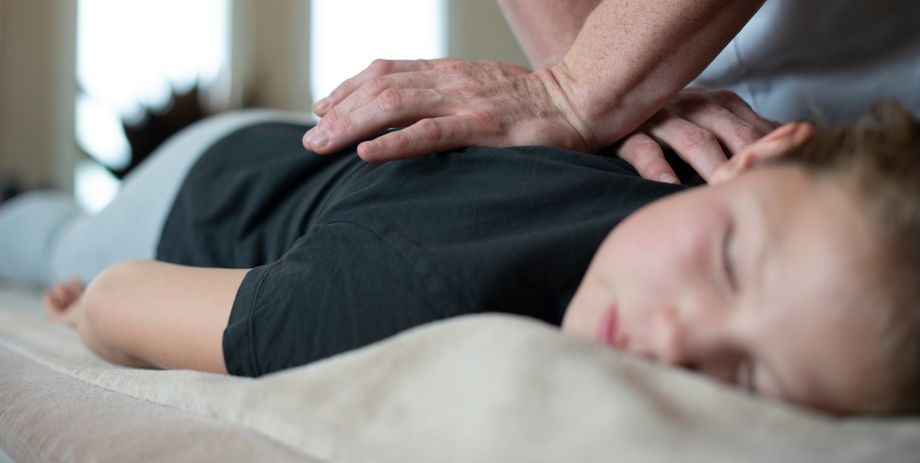There are many different types of massage, those that are for comfort and or those for specific conditions or diseases. Here are a few types:
Aromatherapy
Many essential oils that are derived from plants, herbs, flowers, and roots have beneficial therapeutic qualities. Aromatherapy involves the “burning” of essential oils to elicit a desired effect; for example, lavendar is known to induce calmness and relaxation. When combined with bodywork, aromatherapy can enrich the massage experience immensely. A few drops of essential oil can be added to massage cream or oil and applied to the skin. Professionally trained aromatherapists also blend oils to treat specific conditions. Only experienced professionals and/or those knowledable in the properties of aromatherapy should attempt to blend oils or utilize them in practice, as some oil combinations can be toxic, while others can burn the skin.
Connective Tissue Massage
Connective tissue massage is similar to myofascial release in that it involves working with the body’s fascia, or soft tissue, to relieve pain, tightness, and discomfort. The idea behind connective tissue massage is that restriction in one area of the body negatively affects other areas of the body. Practitioners of this technique “hook” their fingers into the connective tissue and utilize pulling strokes to lengthen the area. Benefits include pain reduction, tension relief, improved mobility and stress reduction.
Deep-Tissue Massage
Deep-tissue massage utilizes slow strokes, direct pressure or friction applied across the grain of the muscles with the fingers, thumbs or elbows. Deep-tissue massage works deeply into the muscles and connective tissue to release chronic aches and pains; its purpose is to reach the fascia beneath the surface muscles.
Practitioners must have a thorough understanding of the human body and have been trained to administer deep-tissue massage, as injury can occur if the technique is not performed properly. This technique is useful in treating chronic pain, inflammation and injury.
Geriatric Massage
Geriatric massage involves treating the elderly, often in resident-care facilities, and addressing their needs related to aging, depression and illness. Geriatric massage is usually shorter in duration, and involves the application of gentle techniques to facilitate pain relief, relaxation, and an overall feeling of wellness.
Lymph Drainage Therapy (LDT)
Developed by French physician Bruno Chikly, this technique involves the application of light, rhythmic strokes to help alleviate various conditions related to the body’s lymph system. Among other things, the lymph system is responsible for flushing out toxins and draining fluid, which supports a healthy immune system. When lymph circulation stagnates, however, fluid can build up and cause physical problems, such as inflammation, edemas and neuropathies.
LDT enables practitioners to restore proper lymph flow by using a “mapping” system to assess congested areas in the body, then apply gentle, pressure using the fingers and hands on these areas to reactivate proper circulation.
Massotherapy
Massotherapy involves working primarily with the muscles. Practitioners of massotherapy have a background in science, but often incorporate other modalities into their treatments when working with the muscle groups. Benefits of massotherapy include improved circulation and blood flow, as well as pain management.
Medical Massage
Practitioners of medical massage have a strong background in pathology, disease, illness and injury, and the contraindications of specific massage techniques related to various medical conditions. Medical massage therapists frequently work under the direction of or at the request of physicians.
Neuromuscular Therapy (NMT)
NMT is massage applied to specific muscles, often used to increase blood flow, release knots of muscle tension, or release pain/pressure on nerves. This therapy is also known as trigger-point therapy in that concentrated finger pressure is applied to “trigger points” to alleviate muscular pain.
Reflexology
This technique is based on a system of points on the hands, feet and ears that correspond, or “reflex,” to other areas of the body. Similar in theory to acupressure, reflexologists believe that applying appropriate pressure to these points stimulates the flow of energy, thus helping to relieve pain or blockages throughout the entire body. A very pleasurable form of bodywork, reflexology is also used to ease stress and promote relaxation.
Sports Massage
Sports massage therapies are both preventative and therapeutic, and used for athletes during warm ups, training and competition to treat and/or aid in the prevention of injuries; help improve flexibility, range of motion, and performance; and aid in mental clarity. Virtually every professional sports team employs professional sports massage therapists, and are often privately employed by professional athletes.
Swedish Massage
Generally regarded as the most common form of massage, Swedish massage involves a combination of five basic strokes and concentrates on the muscles and connective tissues of the body for improved circulation, relaxation, pain relief, and overall health maintenance and well-being. Swedish massage is also one of the less demanding techniques for massage therapists to practice as it usually does not involve deep-tissue work.



